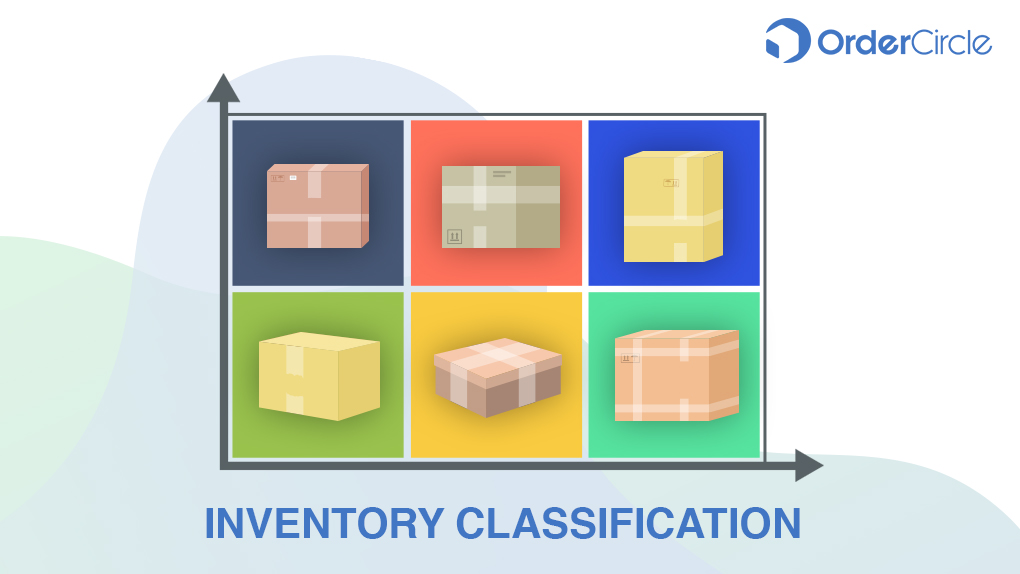Inventory classification
Hasan Nasir

Efficient inventory management is critical for the success of any business. A business aims to maintain an optimum inventory level that helps in timely meeting customer demand while minimizing costs. Excess inventory or stock-outs both harm the company. Excess inventory increases costs, while a shortage of inventory reduces sales. Both these affect the profit of the business. Thus, one needs to manage the inventory at an optimum level. A crucial aspect of inventory management is the classification of the inventory.
Let us under the concept of inventory classification in some detail.
What is Inventory Classification?
Inventory classification means to group the inventory items based on various parameters. These could be inventory type, contribution to sales, frequency of sales, inventory value.
Let us understand these standard classification parameters.
Classification by inventory type:
A primary inventory classification in any business is by its type. There are the following three types of inventory in a business:
- Raw materials
- Work-in-process
- Finished goods
While these terms are easy to understand, let us quickly go through them.
- Raw materials: Raw materials are essential products from which one makes the final product. These products are sold to industries and households. Raw materials are mainly obtained from natural resources. Few examples are wood for paper, leather for shoes, milk for sweets, etc.
- Work-in-process: These are semi-finished goods made of raw materials. Such inventory items are yet to be completed for final sales.
- Finished goods: These are the finished items one sells to the customers.
Classification by contribution to sales:
A few inventory items contribute highly to the sales. Such inventory items are generally given high priority, and more resources are allocated towards their management. They are also monitored strictly. This is because such things drive the profitability of the business to a large extent.
Such an inventory classification is more like the ABC analysis. In this type of analysis, inventory items are categorized into three categories:
Category A includes 20% of the items that contribute 80% to the sales. Category B includes 30% of the items with a 15% contribution to sales. Category C includes the balance of 50% of the items with only a 5% contribution to sales.
Such a classification helps a seller decide on various parameters. He decides the time and resources he should allocate to each category which helps in increasing revenues and reducing costs.
Classification by frequency of sales:
Some inventory items sell quickly, and some sell with a delay. Hence, a seller can classify the inventory items based on the frequency of their sales.
Say, for example, Sam is an automobile dealer. He deals in cars of various brands. In his inventory, he has cars of Mercedes brand and Toyota brand. Cars of Mercedes brand do not sell frequently. But when sold, they contribute maximum to sales. Cars of Toyota brand sell frequently but are relatively lower in value. Hence, contribution to sales is not as high as Mercedes.
Another example could be a provision store. Here, perishable items such as milk, bread, and pastries sell quickly. These are consumables that generate steady demand.
However, items such as grains do not sell as quickly as perishables. Such things have a higher shelf life. Hence, once purchased, they can be stored for a reasonable time.
Apart from the above, there are certain items whose demand is difficult to predict. They can be classified into different categories.
Sales frequency helps in deciding the product placement in the warehouse. Frequently selling items can be kept more accessible. A seller can also choose inventory replenishment based on sales frequency.
Classification by value of inventory:
Here, items are classified as high-value items and low-value items. Accordingly, one allocates the time and resources to these items.
To carry out inventory classification, one must adequately map the warehouse. One must create dedicated sections for different product categories wherein all the shelves must be labeled with clarity. This provides quick movement of goods, as per requirement. It also provides direction to employees and reduces errors.
How does inventory classification help?
Classification of inventory is an essential step in the inventory management system. It helps one make informed decisions for stock replenishment, storage, and sales. One can treat different inventory items according to their importance in the business.
For example, one can dedicate more resources towards high-value items selling the highest. Similarly, one can order items with frequent demand more often. One can also track old or stuck goods in the business. One can maintain an adequate buffer for products with stable demand. Thus, it helps in maintaining optimum inventory levels across product categories.
A seller can also regularly track the inventory and monitor the most profitable one. This also reduces the chances of theft. It also provides clarity to employees and hence increases their efficiency—all these help improve the sales and profitability of the business.
